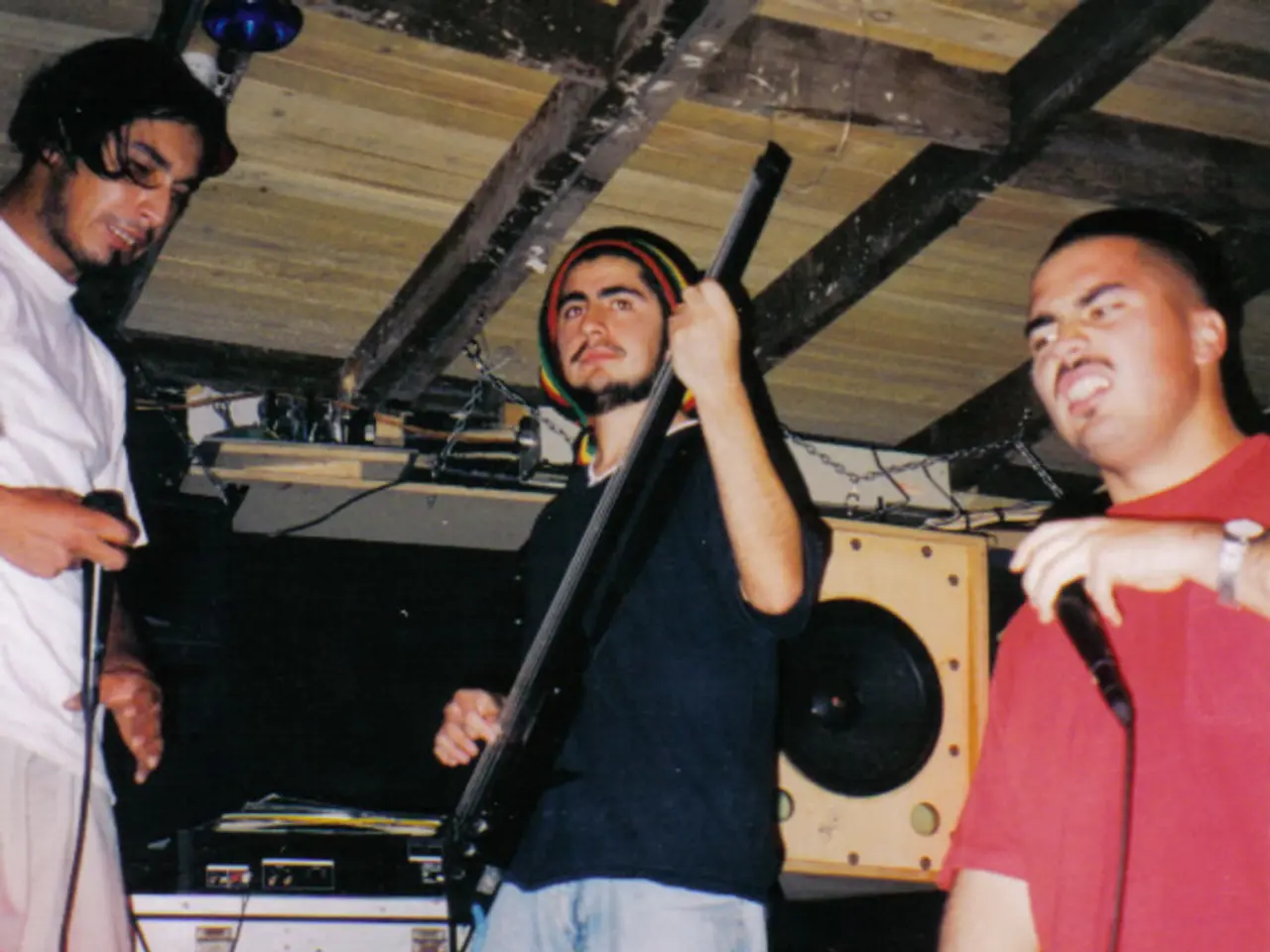Mastering Reverb Application for a Successful Mix Attainment
In the world of music production, two effects stand out for their transformative power: reverb and delay. These tools can significantly enhance the texture and depth of a mix, adding spatial effects and enriching the stereo image.
The Role of Reverb and Delay
Experimentation is key when layering delay and reverb effects. Delay adds distinct repetitions or echoes, while reverb provides a continuous ambient field. The combination of these effects can add rhythm and emphasis without muddying the audio, while keeping the natural quality of the sound intact.
Pre-delay helps separate the initial sound from its reverberated tail, keeping the mix clear and defined. This is particularly important for vocals and percussive instruments. Adjusting feedback and reverb tail controls how sounds linger in space, with the right settings creating a sense of distance or a dreamy, ambient quality.
Choosing the Right Reverb Type
Different types of reverb, such as plate or hall, create a distinct sense of space. For example, plate reverb (smooth and bright) and chamber reverb work well for vocals, providing clarity and presence. Hall reverbs can add lushness and spaciousness, especially for orchestral or balladic vocals.
Spring reverb is iconic for electric guitars, adding characterful and retro vibes. Chamber reverb can also add warmth and depth to acoustic guitars. Hall reverbs provide a large, natural space typical for piano, adding lushness without overwhelming.
General Settings Tips
It's advisable to use no more than two or three different types of reverb within a mix to maintain a cohesive sound. Applying reverb to the entire mix requires subtlety to avoid over-saturation of the mix.
Using reverb sends and returns rather than inserting reverb directly on each track creates a unified spatial environment and saves CPU. Matching the decay time to the tempo and genre—shorter decay for fast, dense arrangements; longer tails for slow or atmospheric music—is also crucial.
The Impact of Delay and Reverb on Instruments
When adding reverb to vocal tracks, aim for a short decay time to keep vocals clear while providing space. Impulse responses are recordings of the reverberation of a space, capturing its unique acoustic properties.
Guitar tracks benefit from reverb that widens their presence without overshadowing other elements. Positioning reverb carefully in the stereo field can widen the mix.
Plate reverb suits snares for bright and smooth ambiance, while short room reverbs help drums sound natural and coherent. Using send/return channels allows sharing reverb effects among multiple drum tracks, keeping the mix cohesive.
Hall reverbs provide a large, natural space typical for piano, adding lushness without overwhelming. Room reverbs fit more intimate piano sounds. Adjusting decay to match the song tempo—shorter for busy mixes, longer for slow, spacious tracks—is essential.
The Power of Automation
Automation plays a key role in dynamically adjusting reverb during different sections of a track. This can create a more engaging and dynamic listening experience.
Convolution reverb can transform simple tracks into unique soundscapes. This technology uses impulse responses to recreate the acoustic properties of specific spaces, adding a layer of realism to the mix.
The Appeal of Hardware Units
Hardware units offer tactile control and a distinct sound, often sought after for their warmth and character. These units can add a unique flavour to a mix, making it stand out from the crowd.
In summary, reverb and delay play pivotal roles in shaping the depth of a mix. By choosing the right reverb type, setting decay and pre-delay to taste, and using automation and hardware units wisely, producers can create rich, immersive soundscapes that captivate listeners.
- The combination of delay and reverb effects, when correctly applied, can add rhythm, emphasis, and spatial effects to a music mix without muddying the audio.
- Different types of reverb, such as plate or hall, provide distinct senses of space and are suitable for specific instruments; for example, plate reverb is effective for vocals and electric guitars, while hall reverb adds lushness to orchestral and balladic vocals.
- To maintain a cohesive sound in music production, it's advisable to use no more than two or three different types of reverb within a mix and to apply reverb to the entire mix subtly to avoid over-saturation.
- Automation can create a more engaging and dynamic listening experience by dynamically adjusting reverb during different sections of a track, while convolution reverb can transform tracks into unique soundscapes by recreating the acoustic properties of specific spaces.




